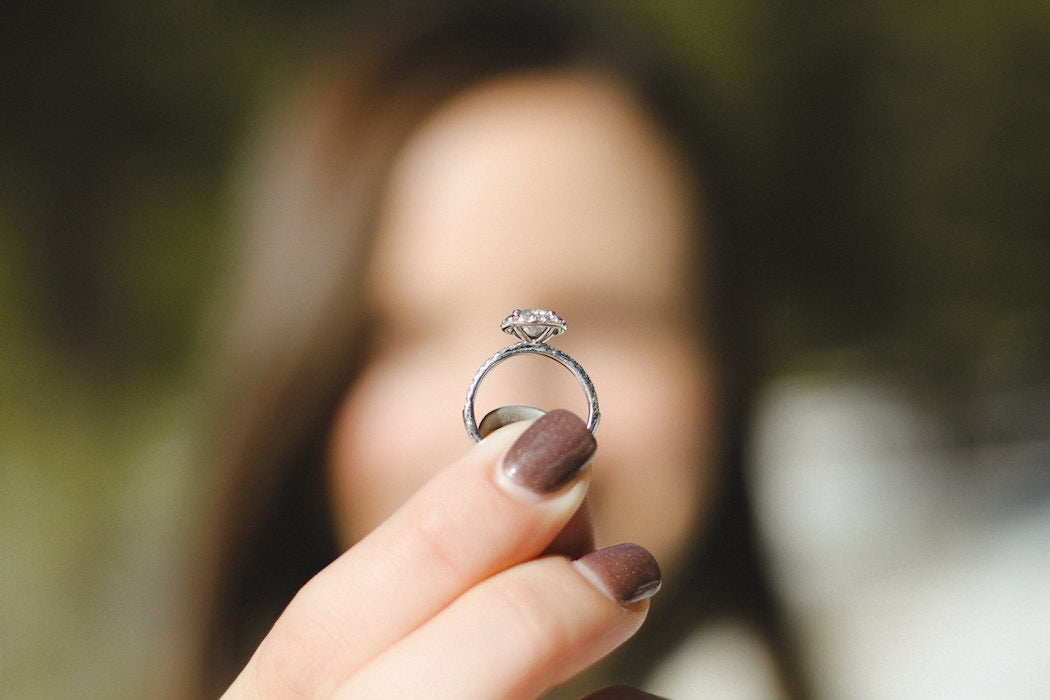
HOW TO BUY A DIAMOND
Share
Buying a diamond can be murky waters to wade through for the inexperienced, just like buying a car for the first time. There is a large amount of valuable information to know that isn't readily available.
Over the next few weeks we at Abbot & Rinehart Jewelers will give you a step-by-step breakdown of the basic knowledge needed to not only unlock the mystery of a diamond's quality, but help you understand a diamond's value, price, and what to focus on.
STEP 1) UNDERSTAND THE 4CS

You'll hear these referenced often when purchasing a diamond. All four factors play a part in a diamond's beauty, rarity, and price; think of a 4-armed teeter totter.
- Carat - Diamond carat is a unit of measurement that refers to a diamond’s weight. There are 5 carats to the gram. Generally speaking, the higher the carat weight, the more expensive the stone. Carat weight can also be a general guide to a diamond's size if it has been cut close to ideal proportions. Two diamonds of equal carat weight, however, can have very different quality and size. The diamond's price will also vary when the other three Cs are considered.
- Color - Diamond color, In most diamonds, the term refers to the absence of color. Confusing I know. The less color in the stone, the more desirable and valuable it is. Diamonds with faint yellow or brown tones are the most commonly mined and are therefore considered less desirable. Some of these differences are not visible to the naked eye, but still have large impact on the overall quality and price of the stone.
- Clarity - Almost all diamonds naturally have some sort of flaw, in one way or another, as they are formed. DIamond clarity measures the amount, size and placement of internal ‘inclusions,’ or and external ‘blemishes.’ These are most commonly referred to as flaws. Grades run from ‘Flawless,’ with virtually no imperfections, to ‘Included,’ which contain a significant number of imperfections. Typically you'll hear terms such as "I1, Si2, VS2," and others.
- Cut- Diamond cut goes back to the stone being cut to ideal proportions, or it's symmetry, its facets, and the quality of the cut. It does not, surprisingly, refer to a diamond’s shape. How brightly a diamond shines and sparkles is largely determined by its cut. Grades range from ‘Excellent’ to ‘Poor.’
Balancing these four crucial elements of a diamond purchase can seem daunting, but with a little education and seeing some stones in person the task becomes very manageable. We always say that the ultimate factor is how a stone looks to you, but The 4Cs of diamond quality will help provide you with the information that you can't see with the naked eye.
STEP 2) CHOOSE A JEWELER

Choosing a jeweler is much like choosing a doctor. You should find someone that is knowledgeable, friendly, open to questions, can provide clear answers in simple language, makes you feel comfortable, and has the experience and training to lend themselves credibility. A professional and educated jeweler will not only explain the 4Cs of Diamond Quality to you, but will encourage you to compare multiple stones while demonstrating the differences and similarities. All while keeping your budget in mind.
Step 3) NOT ALL DIAMOND GRADING REPORTS ARE CREATED EQUAL
There are a multitude of diamond grading reports out there accompanying diamond purchased every day. But not all diamond reports are created equal. What one company calls a G color VS1 clarity, another might call a J color and I1 clarity.
Most people can agree that GIA graded reports are the standard in our industry, meaning they are the closest to accurate and most jewelers would agree on the grading. The lend an indisputable verification to the quality of the stone you're buying. However, GIA reports also lend around a 15% premium to the diamond strictly because they are the gold standard of grading reports.
The bottom line is use your own good judgement and NEVER accept an in-house grading as accurate. Always ask for a third party grading/appraisal or verify that the report was done by a third party. Insist that any diamond you buy come with an indisputable verification of its quality.